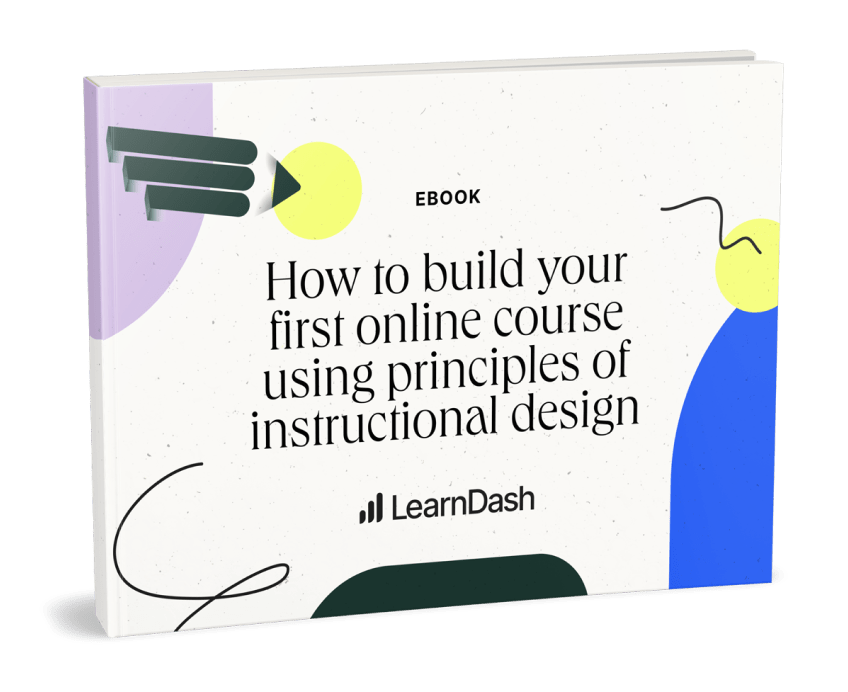
Top 7 E-Learning Challenges for Instructional Designers
Every online educator dreams of creating a course that helps learners fulfill their goals. However, taking a course idea and turning it into a thoughtful, engaging experience can be more difficult than it looks. While the hard work is often worth it, going in unprepared can cause many new course designers to feel disheartened. A lot of instructional design is about planning a course properly.
Before discouragement sets in, take a look at some likely future setbacks and create an action plan for them now. Knowing how to approach these problems proactively will keep you from being caught off guard. It will also give you the confidence you need to push forward without losing momentum.
Here are the top seven challenges that you may face when designing your first course, paired with the strategies to overcome them.
1. Creating engaging content for learners
There is so much content to be made in a course, and it can be a tough job to always be engaging. But it’s worth it: creating engaging content that captures and holds attention can motivate learners and encourage them to stay focused, which can increase their knowledge retention and understanding.
Here are a few ways to make sure your content stays engaging:
- Tell stories. Instead of just presenting facts, write out scenarios and examples to convey a message, demonstrate a concept, and engage your audience.
- Incorporate interactive elements. Interactivity can come through forums, community, or gamification (among other things). This could be as simple as asking a question and providing an option to comment, or as complex as adding a quiz or poll.
- Use multimedia. Multimedia elements such as videos, images, and audio clips can liven up a wall of text. They can also help to break up long lessons, making them easier to read.
- Keep it brief. You need to thoughtfully “chunk,” or break up, your lesson content in a digestible way so learners are better able to pace themselves and engage with your content. Use topics, multiple check-ins, and drip feeding to break up your delivery.
2. Difficulty in Creating Accessible Materials
Accessible instructional materials help ensure that all students can access and benefit from the same educational opportunities as their peers. Accessible instructional materials also help learners participate at their own pace and foster an inclusive and welcoming environment for all students.
Being accessible means ditching flashy graphics and fun fonts. Add captions and downloadable transcripts for videos. Make fonts clean and colors minimal. Use alternative text (alt-text) to describe the image and its purpose for visually impaired learners. Use descriptive headings so screen readers can interpret the content. Take the time to make these a part of your design process now so it becomes second nature.
3. Difficulty in Identifying Learning Objectives
Resist the urge to lure people in with generic promises to make them better. You’ll need to be reasonable in what your course can achieve in the amount of time.
To help identify your learning objectives, plan out your major course milestones. These can be the major projects, tests, or achievements in your course. Then, use your milestones to create a course outline. How many lessons are there before the first test, and in between tests, for example? Then, consider the work holistically. What are all of your lessons and milestones really teaching the learner? That’s your course objective, or outcome.
A good way to build towards an objective is to scaffold the learning. Scaffolding introduces new ideas in phases that build upon one another, leading to more complicated work by the end of the course. One learning framework called Bloom’s Taxonomy outlines how you can scaffold learning objectives:
- Remember
- Understand
- Apply
- Analyze
- Evaluate
- Create
With this model, early units are likely to focus on activities that help learners understand concepts, while later units will introduce analyzing, evaluating, and creating, such as in a final project or paper. Using this framework will help ensure that your individual assessments and course milestones are aligned with your course objectives.
4. Keeping up with emerging instructional tools and technology
The educational landscape is constantly changing and evolving. New technologies and pedagogical approaches are emerging all the time. Staying informed will help instructional designers create more effective learning experiences as well as stay ahead of the competition.
Emerging technologies within the e-learning industry itself are likely to become major differentiators, as some courses stick more visibly to a traditional teaching plan, and others venture into experimental waters. Knowing what your options are—and being prepared to incorporate them if need be—can help you find ways to innovate.
To keep up with emerging tools and technologies, look for workshops and conferences that you can attend. There are always pieces of training, including our own LearnDash Webinars, that aim to keep course creators ahead of the trend. You can also find and follow relevant blogs and social media accounts in the industry for daily updates.
5. Designing for broad audiences
You can’t cover every aspect of your topic for every kind of learner. If you go too wide, your lessons will feel shallow and lack substance. However, if you tighten your audience niche, you can go deeper into the topic, where true learning happens.
To find a niche where you can dive deep, think: What are your credentials or experience in this topic? What special and specific knowledge do you have that others will want to know?
To discover how effective your niche learning is, you’ll need to properly assess your assignments. One of the best tools for assessment is rubrics. Share a rubric with your assignment instructions to help clarify expectations and highlight how the assignment aligns with your learning outcomes. This can be an important measure of how well your learners are understanding course concepts, and if your assignments are hitting the sweet spot of difficulty.
6. Lack of Time and Resources
You’d love to spend all the time in the world designing your course, but it’s just not possible. Other course demands, not to mention grading, can take a significant amount of time.
Early in the design process, embrace templates. Most templates are optimized for online learning and have accessibility features in place. Chunking and scaffolding will come naturally.
Once the class is live, automate as much as you can. Consider automating weekly email check-ins, feedback after quiz scores, or reminders for due dates. This still gives the learner a personal connection to you without you having to craft dozens of emails.
7. Supporting learners through the rough spots
Just as you’ll hit some rough spots when designing the course, your learners will also hit some difficult patches. Be ready with a helping hand in the form of check-ins, micro quizzes, and even online office hours where you can schedule a meeting to see how they’re doing. A little bit of outreach can go a long way.
It isn’t possible to predict all of the challenges you might face in the design process, but these major categories can keep you from stalling out early. Knowing what to expect can keep you on the right path when challenges inevitably arise.
Don’t stop with this list, either. Think about the specific needs and concerns of your learners, and be proactive in addressing them. The more you think about your course from the perspective of your students, the stronger your design will be.
Ready to design your first course? Download the ebook, How to Build Your First Course Using the Principles of Instructional Design, and begin your course-building journey today.

Rachel Kolman
@LearnDashLMS






